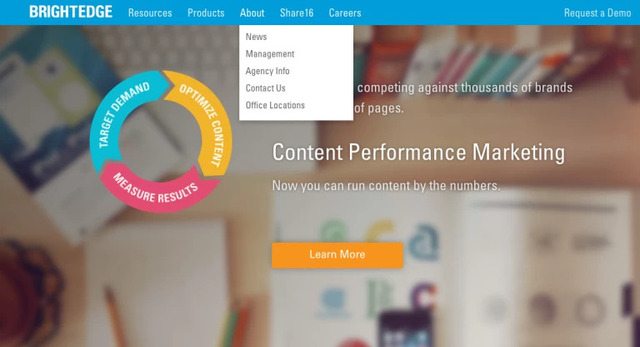Your Google ranking is your starting point at the top of the funnel that drives your business outcomes farther down the funnel. Where your page appears in the SERPs will impact how many people click on your link and visit your site. According to BrightEdge research, an estimated 63 percent of clicks will go to the organic results on the first page of the SERPs, and 56 percent of clicks will go to the top 5 results alone with even higher concentration in mobile. This means that where you rank on the SERPs will impact your traffic and revenue. 
Google creates their ranking system with the intention of showing sites that are the most relevant and helpful for users. They want to provide an optimal user experience every step of the way. Improving your ranking, therefore, revolves around proving to the Google algorithm that your page provides that superior quality content for its users. No one outside of Google themselves actually knows how the algorithm has been written, but we do know that hundreds of factors go into determining Google ranking.
The significance of various criteria have been speculated on by SEOs through tests and experimentation. BrightEdge does not recommend guessing at factor weights, but instead guides customers to create content that works best for humans but is also optimized for search crawlers. Here is what you should know about improving your position on the SERPs.
The factors that impact your site Google ranking
Content quality
Google wants to provide users with quality information. They want to return sites that will not just provide a shallow answer that offers little value, but rather authoritative sites that explore a topic in-depth and can help people fully answer their questions. To improve within these content-dependent Google ranking factors, you need to make sure that your material offers this value. The first step to accomplishing this is aligning your content with your ideal customer personas and their buyer journeys. You need to know who you are writing for, what drove them to your website, and what they want to see that will encourage them to move closer towards a purchase. This level of personalization will help you produce content that is written specifically for a person, rather than just a generic customer.
You will be able to provide more value and greater content insight. Produce a variety of different types of content, including visual content - such as videos and infographics, in addition to textual content - blog posts, whitepapers and case studies. This variety will help you provide value for different visitors within the persona type depending upon their preferences. You also want to make sure that the content is engaging and addresses the topic thoroughly. Do not just repeat everything else that is available on the web, but rather spend time developing original material and exploring your own expert opinion. When you follow these guidelines, your content will attract more readers to your page and they will spend more time on your site. Bounce rate and time to return are factors Google uses to determine engagement and content quality. Feel free to test your knowledge of the most important aspects with BrightEdge Digital Marketing Quiz or SEO Quiz.
Site navigation
Google ranking is also dependent upon how well your site provides an optimal navigational experience for the user. Sites that are confusing, crowded or difficult to navigate will be frustrating for users. This will increase your bounce rate and you will be ranked lower by Google. Your site should be designed with the end user in mind. Make sure that navigation is intuitive and clearly marked. Any site errors should be eliminated. Use the BrightEdge platform to check for problems and monitor your site activity so you know if any visitors encounter challenges as they move around the page. Your site should also be completely mobile-optimized. Google has already mandated that sites be mobile-friendly or risk taking a hit to their rankings. Mobile optimization, however, goes much deeper than responsive design. You also want to make sure that your site has been organized with a mobile user in mind, taking into account the types of content they most frequently seek on your site and the challenges of using a small touch screen.
Position in the digital ecosystem
Site Google ranking is also influenced by how the site fits into the greater digital ecosystem. Google trusts that quality sites generally link to other positive sites, so building a strong backlink profile from a number of high-quality sites can be very beneficial. When you have a variety well-regarded sites linking to your page, it will help show the search engines that your content is regularly regarded as authoritative by users. Building a quality backlink profile requires first having valuable content in place that will attract other positive sites. Your content should be the same caliber as the sites that you want linking to you. You then need to distribute this content liberally to expose more people to your material and show them that your page provides them with value. Use social media, newsletters, email messages and other systems at your disposal to provide your followers with access to your content. You can also use BrightEdge to uncover potential backlink opportunities. BrightEdge will look at your competitor pages and analyze a variety of web pages to find potentially applicable instances where a link to your page would make sense. You can be proactive about backlinks by publishing content others will link to and cultivating influencer relationships. This will help you build backlinks from sites that are highly regarded within your industry and topical niche. Be sure you're building quality backlinks without error like orphan pages.
Communication with the site algorithm
Although the Google algorithm is now far more focused on context and understanding user intention, that does not mean that the word choices you use are disregarded. Keywords still provide value because they clearly communicate the topics that your content covers. You want to make your ideas clear to the search algorithms by using occasional keywords. The important thing to remember, however, is that keywords must be used naturally and occasionally sprinkled throughout a page. More is not always better when it comes to communicating with the search engine spiders. Using keywords in your H1, H2, URL, alt text and occasionally in the content, however, can be valuable. They make it easier for Google to match your content to the intentions of the user.
How do I improve my Google ranking?
- Develop your buyer personas and map them to their buyer’s journey. Use this to develop high-quality content that is worthy of the top Google ranking.
- Run a BrightEdge site audit to search for potential problems and correct any errors that are uncovered.
- Review your BrightEdge recommendations to find areas where optimization could be improved that will help your site better communicate with the search engine spiders.
- Build a strong distribution plan based around your intended audience and the type of content you want to promote.
- Monitor your backlink profile and use BrightEdge to find potential opportunities to gain more quality inbound links.
- Regularly use metrics, like those available through StoryBuilder to see progress and make adjustments as needed.
Improving your site’s ranking can seem like a daunting task when you first draft a fresh piece of content. When you understand what Google wants to see, you can begin to build the content and reputation you need to make your content perform better. By creating your content to answer the needs of users and properly communicating with the algorithm about your content, you can start to see improvements in your site Google ranking.


